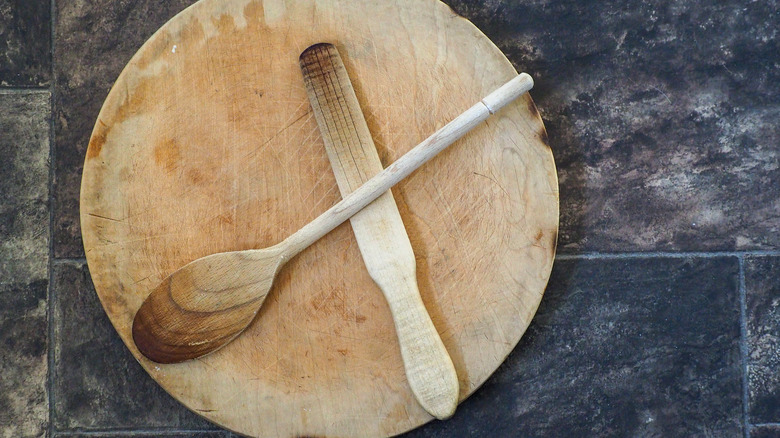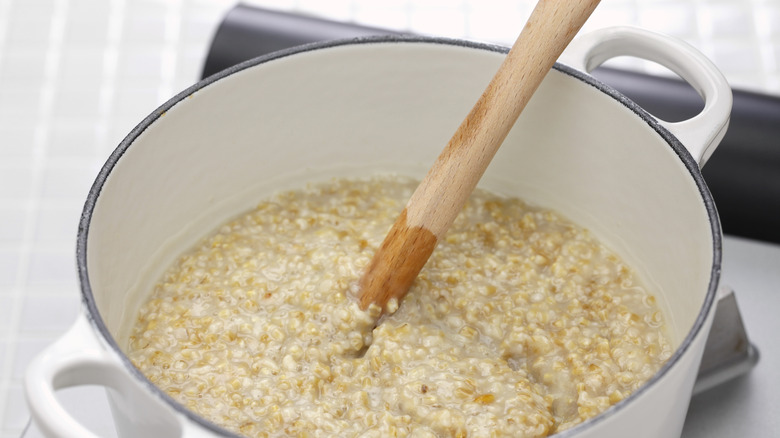Spurtle: The 15th Century Scottish Utensil That's Still Used Today
"In an age of too many kitchen appliances with too few uses, it's liberating to see a simple tool that can do a host of things," notes Epicurious. We agree. Enter the spurtle, a multi-use tool that might become one of the most useful additions to your kitchen.
Dating back to the 15th century, the spurtle is a wooden utensil that can be used to mix soups and stews, blend creamy oats and porridges, and can even ground spices in a mortar and pestle-like fashion (via National Trust for Scotland). Over the years, this simple yet useful object has developed a committed, competitive following of professional and at-home cooks. At the Golden Spurtle World Porridge Making Championship, where porridge-making is an annual competition, contestants wield spurtles as they attempt to woo judges with perfectly poured bowls of oats.
According to competition rules, participants can use their own pans, and — you guessed it — spurtles to make magic out of basic oatmeal, water, and salt. In 30 minutes, cooked porridge must be produced for judges to taste and rank. Yet it isn't just sweet and savory oatmeal recipes that render spurtles useful.
A multi-use kitchen tool
Also called a theevil or a spirtle, spurtles are typically made from sanded beech or ash wood and can be found with ends shaped either like a flat-bladed spatula or more round, like an elongated spool (per Delighted Cooking). According to the Scots Language Centre, the flat-bladed spurtle design has been used to flip oatcakes and scones, while the rounded shape is often used to stir stews and porridges. One Food52 writer admits that in addition to using the spurtle as a pestle to grind spices and herbs, the tool can also serve as a rolling pin, flattening out dough for cookies and pastries. The best part of a spurtle is that it's easy to clean and can't be burned as you scrape even the deepest, hottest parts of pots and pans (via Delighted Cooking).
If you're looking to transform your oatmeal, spurtles can help ensure you're setting evenly blended, creamily textured oats onto your morning breakfast table. There's a good reason this tool has been in kitchens for centuries.

